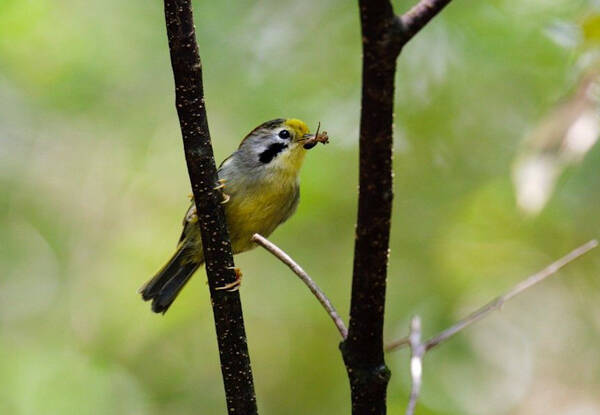Schoeniparus variegaticeps
IUCN
LCBasic Information
Scientific classification
- name:Schoeniparus variegaticeps
- Scientific Name:Pseudominla variegaticeps,Gold-fronted Fulvetta,Schoeniparus variegaticeps
- Outline:Songbird
- Family:Passeriformes Thrushidae Thrush
Vital signs
- length:11cm
- Weight:10-12g
- lifetime:No verification information
Feature
A smaller, brightly colored sparrow
Distribution and Habitat
The habitat of the Golden-fronted Babbler includes freshwater springs, oases, and subtropical or tropical moist mountain forests. The species is found in Yaoshan, Guangxi.
It lives in pairs in the understory of the forest.
Appearance
The moustache is black and the crown on the front is golden. There are fine black and white lines on the top of the head, followed by vertical yellow lines on the crown and nape of the back. Prominent white eye spots extending to the back of the head. The throat is white and the rest of the lower body is stained with ash. The wings are black and the shoulders are white, and the yellow edges of the primary flight feathers form two wing stripes. Tail gray, tail edge yellow.
Iris - dark brown; mouth - brown; feet - orange.
Details
Gold-fronted Fulvetta is a species endemic to central and southern China.

Gold-fronted Fulvetta was discovered and named by Mr. Ren Guorong in 1932. It is also the first wild bird named by a Chinese, and is a milestone in the history of bird research. The origin of the golden-fronted thrush is Dayao Mountain in Jinxiu County, Guangxi.
The call of the golden-fronted thrush: a noisy warning chirp of a flock of birds; a monophonic call (according to R. Williams).
Globally vulnerable, only recorded in several locations in southern and south-central Sichuan and Yao Mountain in Guangxi, common in the region, at an altitude of 700~1900 meters.
Listed in the "National List of Terrestrial Wildlife with Important Economic and Scientific Research Value" issued by the State Forestry Administration on August 1, 2000.
Listed in China's "National Key Protected Wild Animals List" (February 5, 2021) Level 1.
Protect wild animals and eliminate game.
Maintaining ecological balance is everyone's responsibility!








